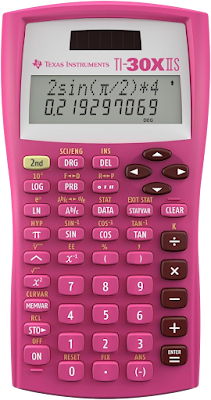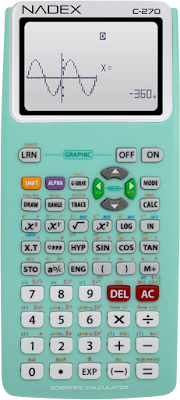Ever spent hours on a calculus problem only to have your calculator bail mid-formula? Yeah, we’ve all been there. Engineering students need a calculator that’s more reliable than a lab partner who actually shows up. Let’s dive into the top 5 scientific calculators that’ll tackle everything from thermodynamics equations to circuit analysis without breaking a sweat.
1. RENUS 8 Packs, 2-Line Engineering Scientific Calculator
For the student who’s always losing stuff (or sharing with study groups)
Need a calculator for your dorm, backpack, and lab partner? This 8-pack is like buying a Costco-sized box of confidence. It includes 16 AAA batteries, so you’re set for years of all-nighters. The 2-line display shows your input and result simultaneously—perfect for catching errors before they wreck your homework.
Why it’s a lifesaver:
- Bulletproof for group projects: Lose one? No sweat—you’ve got seven backups.
- Battery hoarder’s dream: Comes with enough AAA’s to power a small robot.
- Basic but reliable: Handles 240+ functions, from logarithms to stats.
Fictional user story:
Jake, a messy mechanical engineering junior, admits: “I left my last calculator in the machine shop. Twice. Now I stash these everywhere—my car, gym bag, even my laundry pile. My GPA thanks me.”
Pros:
✅ Cheap per unit (great for clubs or lab teams).
✅ Simple interface—no coding skills needed.
✅ Batteries included (because who remembers to buy them?).
Cons:
❌ Bulk packaging—overkill for solo students.
❌ No fancy graphing or CAS.
RENUS 8 Packs, 2-Line Engineering Scientific Calculator : click here
2. Texas Instruments TI-30X IIS (Pink Edition)
For the engineer who wants to flex a little personality
Who says STEM tools have to be boring? This pink TI-30X IIS is tougher than it looks. It nails fractions, exponents, and stats, and the 2-line display keeps your work organized. Plus, the color? Instant backpack finder.
Why it’s iconic:
- Survivalist build: Survived a decade of being dropped in lecture halls.
- Fraction mastery: Simplifies ⅞ into 0.875 faster than you can say “partial derivatives.”
- SAT-approved: Works for exams and late-night problem sets.
Fictional user story:
Maria, a civil engineering student, laughs: “My classmates teased me about the pink… until I aced the stats midterm. Now three of them own one.”
Pros:
✅ Nearly indestructible.
✅ Lightweight and exam-friendly.
✅ Costs less than a textbook.
Cons:
❌ Limited for advanced calculus.
❌ Pink isn’t for everyone (but hey, they make other colors).
Texas Instruments TI-30X IIS (Pink Edition) : click here
Read also: Top Construction Calculators Every Contractor Needs in Their Toolbelt
3. Sharp EL-531TGBBW Hybrid Scientific Calculator
For the student who forgets to charge… everything
Solar-powered and battery-backed? This Sharp model’s like a calculator with a backup generator. The hard cover protects it from coffee spills, and the 12-digit display handles complex equations without cramming.
Why it’s a workhorse:
- Never dies: Solar keeps it alive during outdoor study sessions.
- Crisp display: Shows full formulas, not just shorthand.
- Cover included: No more cracked screens from backpack chaos.
Fictional user story:
Dev, an electrical engineering major, says: “I used mine during a blackout in the library. While everyone panicked, I finished my circuit analysis. Hero moment.”
Pros:
✅ Hybrid power = zero battery anxiety.
✅ Hard cover adds durability.
✅ Great for long decimals (12 digits!).
Cons:
❌ Bulky compared to slimmer models.
❌ Menu takes time to master.
Sharp EL-531TGBBW Hybrid Scientific Calculator : click here
4. Casio fx-115ESPLUS2 2nd Edition
The Swiss Army knife of engineering calculators
This Casio’s a cult classic for a reason. It does integrals, matrices, and even complex number calculations. The Natural Textbook Display shows equations exactly as they’re written—no more deciphering weird symbols.
Why engineers love it:
- All-in-one math tool: Solves equations and shows steps.
- Stupidly versatile: From binary conversions to regression analysis.
- Approved everywhere: AP, FE, even NCEES exams.
Fictional user story:
Lena, a chemical engineering senior, recalls: “I used this during my internship to double-check reactor specs. My boss thought I was a wizard. Spoiler: It was the Casio.”
Pros:
✅ Handles advanced engineering math.
✅ Step-by-step solutions = free tutoring.
✅ Affordable for its power.
Cons:
❌ Not graphing-capable.
❌ Learning curve for newbies.
Casio fx-115ESPLUS2 2nd Edition: click here
5. Scientific Calculator with Graph Functions (Green)
For the student who wants to dabble in graphing… without the price tag
This green machine bridges the gap between basic scientific and full graphing calculators. Plot functions, solve equations, and tackle stats—all for under $30. The color? A nice change from boring black.
Why it’s sneaky good:
- Graphing on a budget: Plot basic functions for calculus or physics.
- High school to college: Grows with your coursework.
- Battery + solar: Reliable for field studies.
Fictional user story:
Ravi, a freshman, shares: “I couldn’t afford a graphing calc, but this green guy helped me visualize derivatives. Got me through Calc I without crying. Mostly.”
Pros:
✅ Cheaper than TI graphing models.
✅ Hybrid power for emergencies.
✅ Easy to read display.
Cons:
❌ Basic graphing only (no 3D).
❌ Buttons feel a bit flimsy.
Scientific Calculator with Graph Functions (Green): click here
How to Pick Your Engineering Calculator
- Check your syllabus: Some professors ban certain models.
- Battery vs. solar: Labs = battery life, outdoor work = solar.
- Test the buttons: Mushy keys = typing errors during exams.
Read also: The Top Graphing Calculators of 2025: Solve Equations, Save Time, and Actually Math
FAQs About Engineering Scientific Calculators (Answered Honestly)
1. “Can I use these calculators in my FE exam or engineering licensure tests?”
Most exams (FE, NCEES, AP) allow basic scientific models like the Casio fx-115ESPLUS2 or TI-30X IIS. Avoid anything with graphing capabilities or CAS—those are usually banned. Always check your exam’s official guidelines, though. Better safe than disqualified!
2. “Do I really need a graphing calculator for engineering?”
Depends on your coursework! If you’re heavy into calculus or data visualization, a basic graphing model (like the Green Scientific Calculator) helps. But 90% of undergrad engineering math? A robust scientific calculator (we’re looking at you, Casio fx-115ESPLUS2) covers it. Save the graphing $$ for grad school.
3. “Battery vs. solar: Which is better for all-nighters?”
Hybrid models (like the Sharp EL-531TGBBW) are clutch—solar keeps it alive near windows, batteries kick in during late-night library caves. Pure solar? Risky if your dorm room has the ambiance of a dungeon.
4. “Will this survive a coffee spill or a 3rd-floor backpack drop?”
The TI-30X IIS is basically Nokia 3310-tier indestructible. For spills, the Sharp EL-531TGBBW’s hard cover adds armor. Avoid leaving the Green Scientific Calculator near open beverages—its buttons are a bit delicate.
5. “What functions do I actually need for mechanical/civil/electrical engineering?”
- Mechanical: Matrix ops, integrals (Casio fx-115ESPLUS2).
- Civil: Stats, regression analysis (TI-30X IIS).
- Electrical: Complex numbers, binary conversions (Casio or Sharp).
Skip flashy features—focus on what your syllabus requires.
Still stuck? Drop your program/year in the comments—we’ll help you pick!
Final Verdict
Whether you’re a frazzled freshman or a thesis-writing senior, the right calculator can turn “I’m doomed” into “I’ve got this.” The Casio fx-115ESPLUS2 is our top pick for heavy-duty engineering math, but don’t sleep on the TI-30X IIS if you want something indestructible (and pink).
Grab yours now: Click the links above—prices change faster than a Fourier transform!
Disclaimer: This post contains affiliate links. We get a small commission if you buy (no extra cost to you!). Thanks for keeping our coffee stocked!


-Photoroom.png)












![The Ultimate Guide to Paint Color Mixing Ratios [2025]: Save Time, Nail Precision & Ditch Guesswork](https://blogger.googleusercontent.com/img/b/R29vZ2xl/AVvXsEgTdw8HvF1atCM5QCPzNSElGw_68iR94GiSS1cK1jhvibDNYaHvlQM4ej9dLg3cI29C_zPz2e7IaVxAFt82c_VwBr9sEv0Lv8gayJ78YcCQ_mJqbjtJU-TDGupLDLBoR3RR6sak3V0G9FEjxoyqsdsx44LKwyTbbMR6JQ3JCty85n0QJchYAAt82KeDRd8B/w72-h72-p-k-no-nu/Scientific%20Calculator_20250330_074225_0000.png)
0 Comments